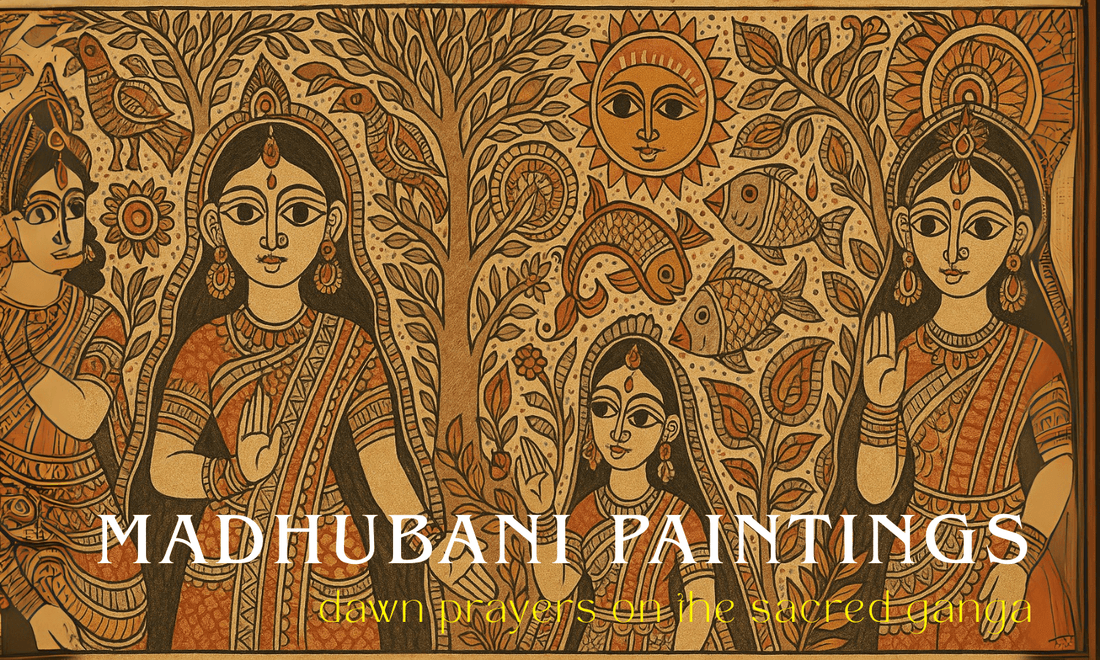
Madhubani Painting – Stories Painted in Ancient Strokes
Priyanshu SinghShare
Introduction – A Canvas of Culture and Tradition
Madhubani painting, also known as Mithila painting, is not just an art form—it’s a centuries-old storytelling tradition from the Mithila region of Bihar, India. Created with natural dyes, bold colors, and intricate lines, these paintings narrate tales of mythology, folklore, and everyday life. Each brush stroke is a connection to ancient heritage, making Madhubani an integral part of Bihar’s cultural identity.
Origin and History
The origins of Madhubani painting trace back to ancient epics like the Ramayana, where it is believed that King Janaka commissioned artists to paint his daughter Sita’s wedding to Lord Rama. Traditionally, women painted these works on the walls and floors of their homes during festivals and ceremonies, using natural pigments derived from flowers, leaves, and minerals.
Over time, this art form transitioned from mud walls to handmade paper and canvas, reaching admirers across the globe. Yet, the heart of Madhubani remains deeply rooted in its rural beginnings.
Themes and Symbolism
Madhubani paintings are more than decorative—they are rich in symbolism. Common themes include:
Mythological Tales – Depictions of gods and goddesses like Krishna, Durga, and Ganesha.
Nature and Seasons – Trees, birds, fish, and the sun often symbolize prosperity and harmony.
Social and Cultural Life – Marriage rituals, harvest scenes, and village life are frequently captured.
Every element in a Madhubani painting carries meaning—fish for fertility, peacocks for love, and the sun for energy and growth.
Unique Styles and Techniques
Madhubani art is created using five distinctive styles:
-
Bharni – Filled with vibrant colors and religious themes.
-
Kachni – Fine line work with delicate patterns.
-
Tantrik – Spiritual symbols and tantric motifs.
-
Godna – Inspired by tribal tattoo patterns.
-
Kohbar – Depicting love, fertility, and marriage.
Artists traditionally use fingers, twigs, nib pens, and matchsticks, with colors made from turmeric, indigo, hibiscus, and other natural sources.
Global Recognition and Cultural Significance
Today, Madhubani paintings are showcased in galleries, worn on fabrics, and cherished by collectors worldwide. UNESCO has recognized the Mithila region’s cultural heritage, and Madhubani artists have received international acclaim for keeping this tradition alive.
For the people of Bihar, Madhubani is more than art—it’s an emotional legacy. Every painting is a bridge between generations, carrying forward stories in ancient strokes.
Supporting Local Artisans
At Crafts of Bihar, we collaborate directly with skilled Madhubani artists, ensuring they receive fair pay for their work. By purchasing authentic Madhubani products, you not only own a piece of timeless art but also contribute to sustaining this beautiful tradition.
Conclusion
Madhubani painting is a celebration of history, culture, and creativity. Each masterpiece is a timeless story told through vibrant colors and intricate details—a story that continues to live on in the hands of Bihar’s talented artisans.
Madhubani painting, Mithila art, Bihar handicrafts, traditional Indian art, Madhubani artists, hand-painted art from Bihar.
